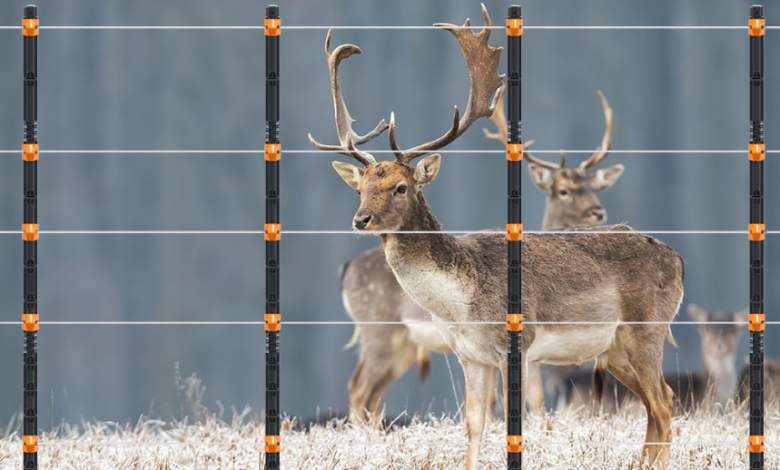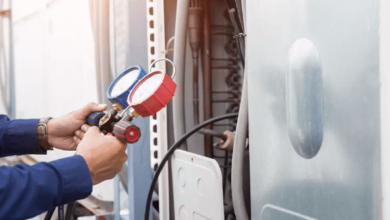Poly Deer Fences and Tensioning: When It’s Necessary and How to Maintain Optimal Performance

Polyethylene deer fences are popular for their lightweight, flexibility, and ease of installation. However, a common question among property owners is: Do I need to tension a poly deer fence? Understanding when and why tensioning is necessary can help maintain your fence’s strength and keep deer out effectively. This article explains the importance of tensioning poly deer fences, how to check if your fence needs it, and simple maintenance tips for optimal performance.
Why Tensioning Matters for Poly Deer Fences
Poly deer fences are made from flexible plastic mesh, which offers many advantages such as resistance to rust and easy handling. However, because of this flexibility, the fence material can loosen over time due to weather conditions, animal pressure, or installation issues. This is where tensioning comes in.
Tensioning is the process of tightening the fence mesh between posts to keep it firm and upright. When a poly fence is properly tensioned:
- The fence resists sagging and stretching.
- Gaps or loose spots that deer could exploit are minimized.
- Fence posts remain stable, reducing wear.
- Overall fence lifespan is extended.
Without adequate tension, the fence becomes loose, making it easier for deer to push through or climb over. This can lead to frequent repairs and reduced garden protection.
See also: The Difference Between At-Home Skincare and Professional Treatments
Signs You Need to Tension Your Poly Deer Fence
Knowing when to tension your fence is important. Here are common signs that your poly deer fence may need attention:
- Sagging Mesh: If parts of the fence appear to droop or hang loosely between posts.
- Gaps or Openings: Spaces developing where the mesh pulls away from posts.
- Visible Stretching: Mesh strands looking stretched or thinner in places.
- Posts Leaning: Fence posts bending or tilting, often caused by uneven tension.
- Deer Damage: Evidence of deer pushing through or climbing over in certain spots.
If you notice any of these signs, it’s time to check your fence tension and make adjustments.
How to Check the Tension of a Poly Deer Fence
Checking fence tension is a straightforward task. Follow these steps:
- Visual Inspection: Walk the fence line looking for sagging or loose mesh.
- Feel Test: Gently push on the mesh in several areas. A properly tensioned fence should feel firm with little give.
- Post Check: Look at fence posts for signs of leaning or instability, which can indicate uneven tension.
- Measure Distance Between Posts: If the mesh has pulled inward between posts more than expected, tension may have decreased.
Regular inspections, ideally once every few months or after storms, help you catch tension issues early.
How to Tension a Poly Deer Fence Correctly
When it’s time to tension your fence, use these tips:
- Use Tensioners: Specialized fence tensioning tools or ratchets help pull the mesh tight without damaging it.
- Start at One End: Anchor the mesh firmly to a strong post and pull tension gradually toward the next post.
- Secure Mesh Firmly: Use wire ties, clips, or zip ties to attach mesh securely to posts as you tension.
- Avoid Over-tightening: Pull the mesh tight but not so much that it tears or warps the material.
- Check Post Stability: Tightening increases pressure on posts, so ensure they’re solidly anchored.
- Work in Sections: Tension one section between posts at a time for better control.
Proper technique ensures your poly deer fence stays tight and durable.
Maintenance Tips to Keep Your Poly Deer Fence in Good Shape
Beyond tensioning, some regular maintenance helps your fence last longer:
- Clean the Mesh: Remove dirt, leaves, or vines that can weigh down the mesh.
- Inspect for Damage: Patch small holes or tears quickly to prevent them from growing.
- Trim Vegetation: Keep grass and plants trimmed around the fence to avoid additional strain.
- Check Fasteners: Replace worn or broken ties and clips as needed.
- Protect Posts: If wooden, treat posts against rot; for metal, check for rust or corrosion.
Consistent upkeep supports your fence’s performance and appearance.
Benefits of Properly Tensioned Poly Deer Fences
Maintaining correct tension offers several advantages:
- Improved Protection: Deer find it harder to get past a firm, tight fence.
- Longer Lifespan: Reduces wear caused by sagging or flapping mesh.
- Better Stability: Prevents posts from leaning or breaking under pressure.
- Cleaner Look: Tight fences appear neat and well-maintained.
- Cost Savings: Avoids costly repairs by preventing fence damage early.
Taking time to tension your fence properly is a worthwhile investment.
Final Thoughts
Answering the question, do I need to tension a poly deer fence? It is clear, yes, regular tensioning is essential for keeping your fence effective and durable. Flexible poly mesh can loosen over time, so monitoring tension, making timely adjustments, and performing routine maintenance ensures your fence continues protecting your garden from deer for years.
By following the simple inspection and tensioning steps in this article, you can maintain optimal performance and extend the life of your poly deer fence.





